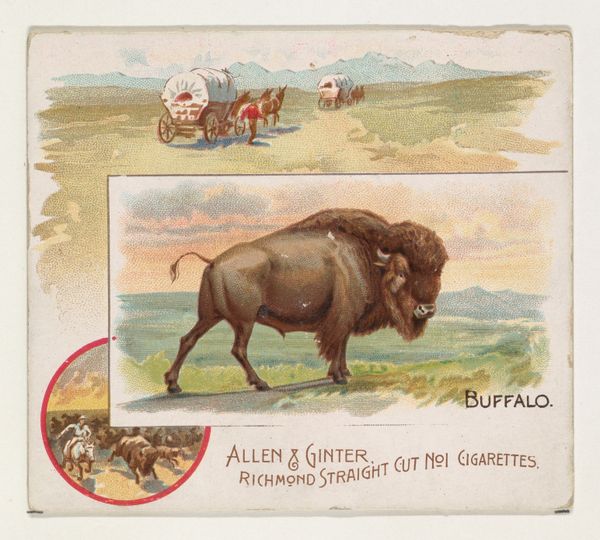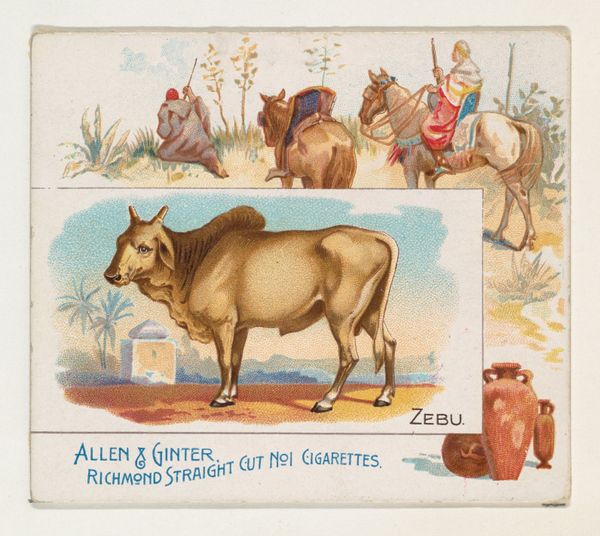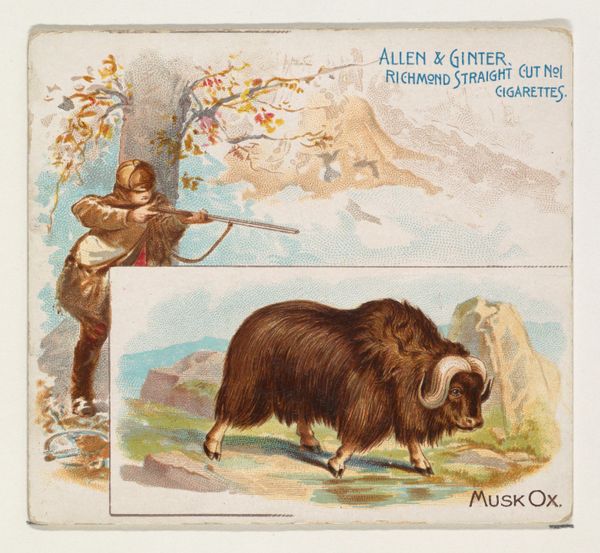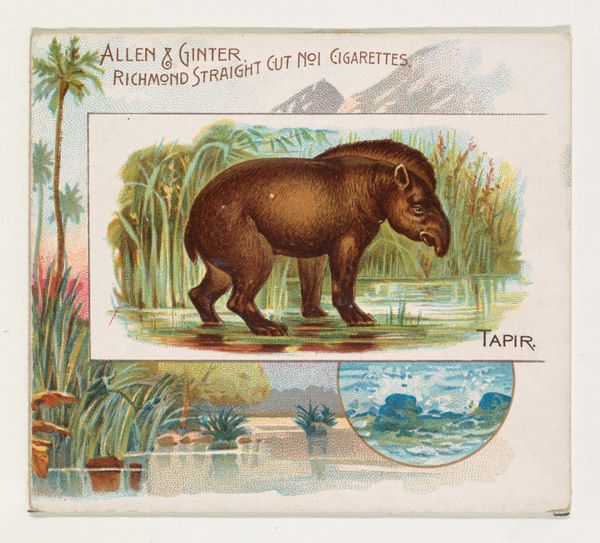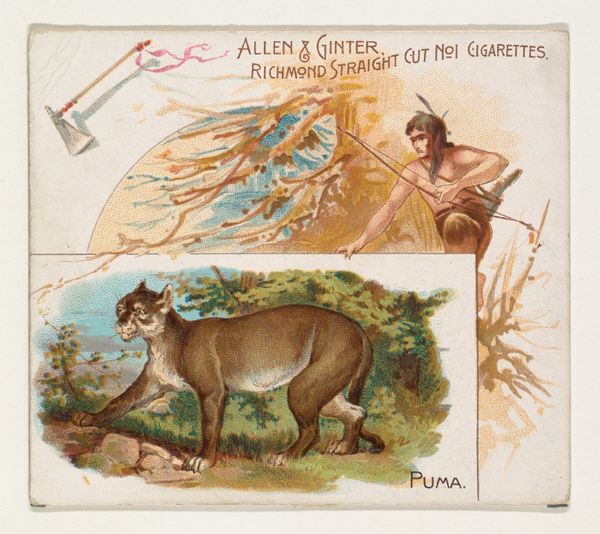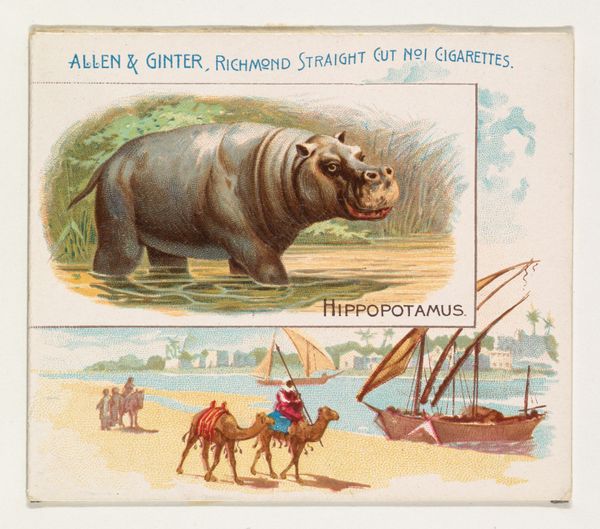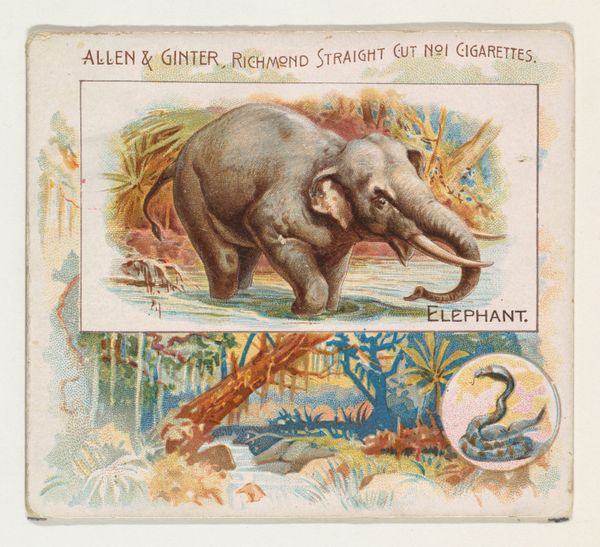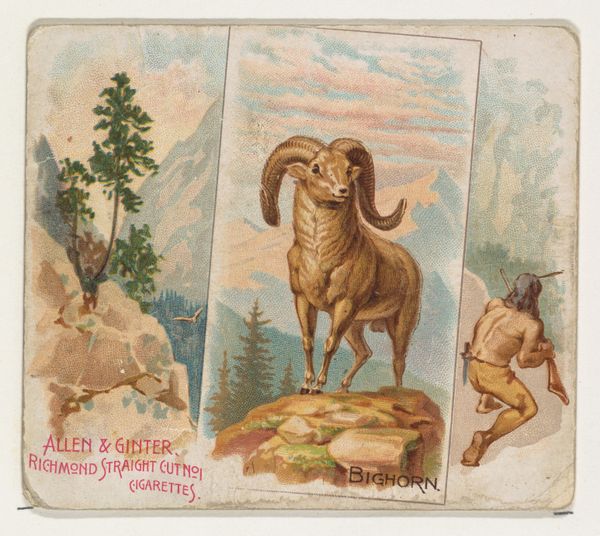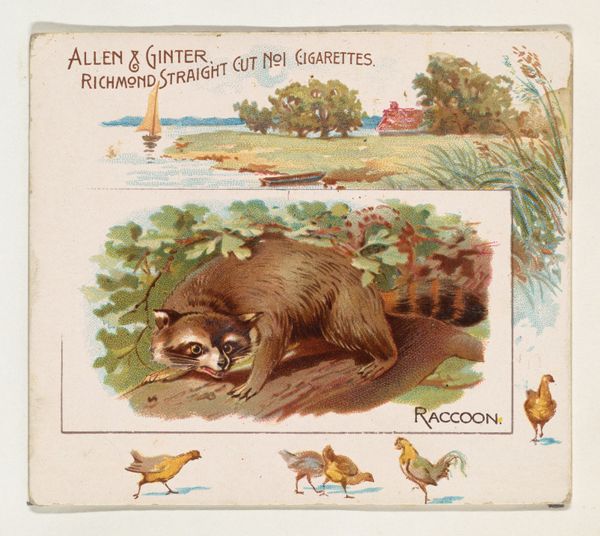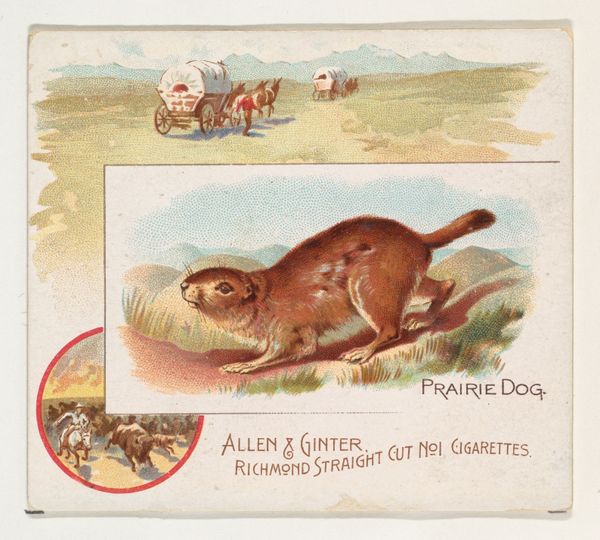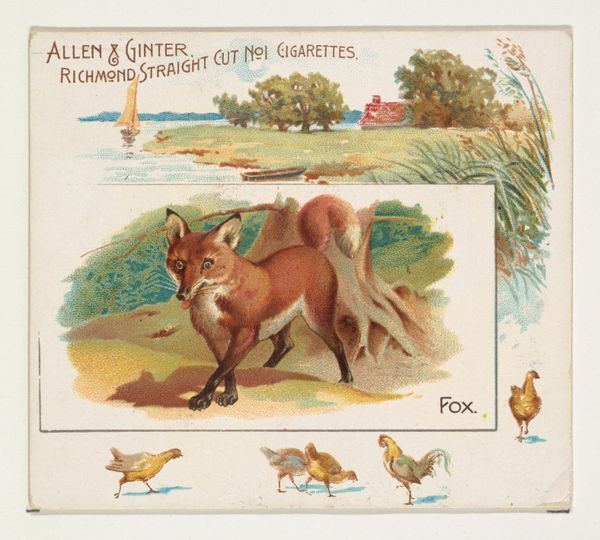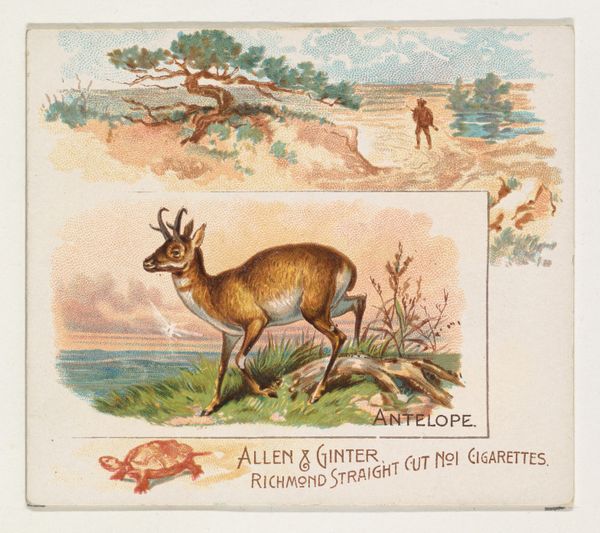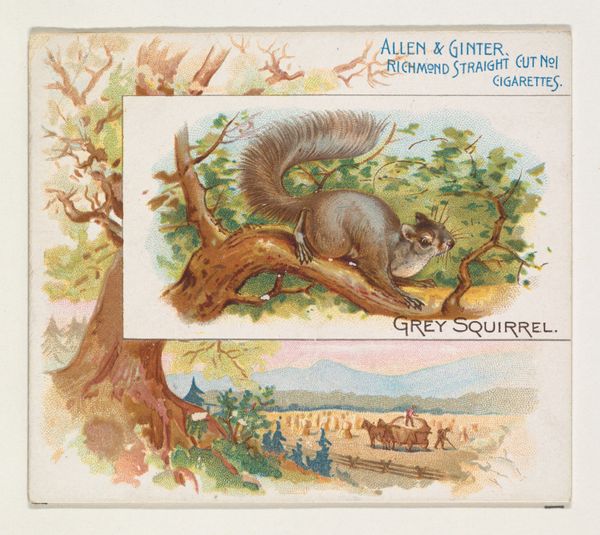
Gnu, from Quadrupeds series (N41) for Allen & Ginter Cigarettes 1890
0:00
0:00
drawing, print, pencil
#
drawing
#
animal
# print
#
appropriation
#
landscape
#
figuration
#
pencil
#
watercolour illustration
Dimensions: Sheet: 2 7/8 x 3 1/4 in. (7.3 x 8.3 cm)
Copyright: Public Domain
Editor: This is "Gnu, from Quadrupeds series (N41) for Allen & Ginter Cigarettes" from 1890. It’s a print that combines drawing and watercolour. It reminds me of an old postcard, with an odd juxtaposition of images. How do you interpret the cultural significance of this image? Curator: The imagery here reveals a fascinating intersection of commercialism and cultural curiosity. This small card was included in cigarette packs, part of a larger series depicting exotic animals, meant to be collected and traded. Look closely at the division; above, the gnu, a relatively unknown animal to Western audiences at the time, represents untamed Africa. Below, the figure with the spear implies an active presence in that untamed place. What does this positioning suggest to you? Editor: It feels like a clear hierarchy. The gnu is the spectacle, observed from a distance, and the human figure seems subjugated by the environment. Was this a common way of portraying these cultures at the time? Curator: Exactly. This reflects a broader trend of exoticization and, unfortunately, the reinforcement of colonial narratives. The image functions almost as a souvenir, a packaged piece of a far-off land easily consumed. It reduces a complex reality into simplified imagery, furthering the distance between the viewer and the subject. Does understanding its use as advertisement influence your view? Editor: Absolutely. Knowing it was meant to sell cigarettes really shifts my perspective. It makes me consider the underlying power dynamics and how easily these images can shape perceptions. Curator: Precisely. Symbols have the power to create cultural memory. This single card represents how a whole continent could be framed. Editor: It’s incredible how much history and ideology can be packed into something so small. It makes you question the visual narratives we consume today. Curator: Indeed. The symbols may change, but the power of the image persists.
Comments
No comments
Be the first to comment and join the conversation on the ultimate creative platform.
